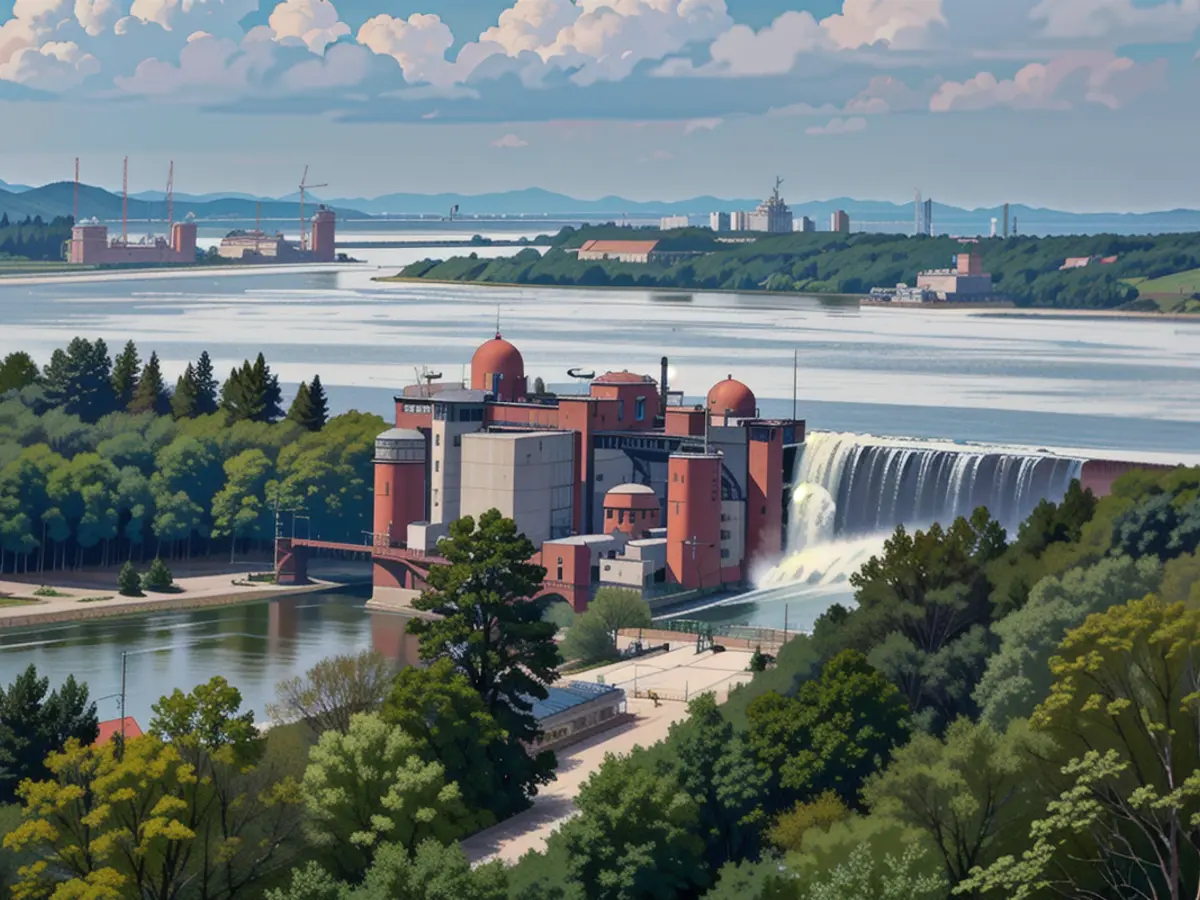Experts in nuclear technology express skepticism toward the American proposal to revive and operate a Ukrainian power plant.
Chatter Around US Ownership of Ukraine's Nuclear Power Plant: A Shot in the Dark?
The Zaporizhzhia nuclear power plant, under the control of Russian forces since the beginning of the ongoing war, has sparked discussions about potential US ownership to stabilize the plant and protect its infrastructure. However, experts caution that implementing this plan may encounter practical challenges.
According to official statements, US President Donald Trump and Ukrainian counterpart Volodymyr Zelensky talked about Ukraine's electrical supply and nuclear power plants during a phone call. Trump suggested that the US could run the plants with its electricity and utility expertise, implying US ownership would offer the best protection for the plant and support for Ukrainian energy infrastructure.
However, Zelensky contestingly mentioned that ownership discussions did not take place during their conversation. He claimed that the state, not the US, owns all nuclear power plants, including the temporarily occupied Zaporizhzhia region.
Zelensky had previously expressed readiness to consider the possibility of American investment in the restoration and modernization of the plant. He highlighted concerns over the occupation of the city of Enerhodar, where the plant is located, as a significant hurdle to reestablishing control.
A UN nuclear watchdog team expressed concerns over the plant's ongoing maintenance due to nearby explosions. The experts raised the question of US liability should an accident occur at the facility due to operational lapses or safety incidents, given the responsibilities that come with ownership.
Operating the nuclear plant safely would necessitate a secure and reliable power supply and sufficient water supplies for cooling the plant. The plant's cooling infrastructure has been damaged due to drone strikes and frequent shelling, making it difficult to provide a stable operating environment.
Moreover, the US lacks experience operating VVER-1000 reactors, which are used at the Zaporizhzhia plant. The use of different reactor technologies and licensing requirements presents logistical and technical complexities in transferring operational control to the US.
The idea of US operation raises several questions and concerns over feasibility, logistics, and practicality. Nevertheless, if carefully planned and approached, the restoration of the Zaporizhzhia power plant could signify a step toward resolving the ongoing conflict and providing a safe, secure, and efficient power supply to Ukraine.

Ukraine Advocates for aKey Role in the Plant’s Restoration
To ensure the plant's safe and effective restoration, Ukraine emphasizes the need to maintain a prominent role in the process. Zelensky asserted that Ukraine, as the owner, should have considerable input in the plant's rehabilitation and operation.
He stated that returning the plant would only be possible if control over the region, particularly the city of Enerhodar, is secured. Otherwise, the plant may face a dangerous cycle of restoration and potential damage or destruction, further jeopardizing the region and employees working at the plant.
CNN's Svitlana Vlasova, Christian Edwards, and DJ Judd contributed to this report.
Behind the Curtains
- Current State of the Plant: The Zaporizhzhia plant has been in disrepair since the Russian occupation, facing safety concerns as the six reactors are in cold shutdown. The cooling systems are compromised after the destruction of the nearby Kakhovka Dam, and alternatives for water supply remain limited.
- Occupation and Security Risks: The plant's location in Russia-controlled territory presents significant security risks and complicates diplomatic efforts to secure the facility's operations. The ongoing conflict and shelling near the reactors pose a constant threat to the plant's safety, making it difficult for foreign entities to operate the plant securely.
- Technological Differences: Differences in reactor technology and licensing requirements make it difficult for operators with limited experience in managing VVER reactors to take over control from Ukrainian staff. Extensive repairs are needed before the plant can operate safely.
- Political and Legal Challenges: Legal and political complexities are associated with transferring ownership or control of a state-owned asset to a foreign entity. Ukraine's President, Zelenskyy, has shown both openness and caution in cooperating with the US to restore the plant's operations, focusing on securing the region first.
Sources:
- CNN – Zaporizhzhia Nuclear Power Plant sits in no man's land amid violence and Russian control
- US News – How the US Could Own the Owner of Europe's Largest Nuclear Power Plant
- Nuclear Power – US could run Zaporizhzhia Nuclear Power Plant: Wright
- Disarmament Diplomacy –Are There Estimates of the Costs of Restoring the Zaporizhzhia Nuclear Power Plant?

Zealously safeguarding Ukraine's sovereignty over its nuclear power plants, President Zelensky emphasized that the Zaporizhzhia plant, particularly the VVER-1000 reactors, remains under Ukrainian ownership. He also cautioned that any potential international collaboration for the plant's restoration and modernization must be approached with the utmost care, considering the complexities arising from the ongoing conflict and the security risks posed by the plant's location in a Russia-controlled territory. In 2023, estimates of the costs to restore the Zaporizhzhia Nuclear Power Plant may become available, shedding light on the feasibility of international cooperation and the necessary investments to ensure the plant's safety in the long run.



